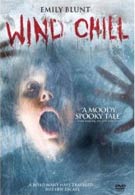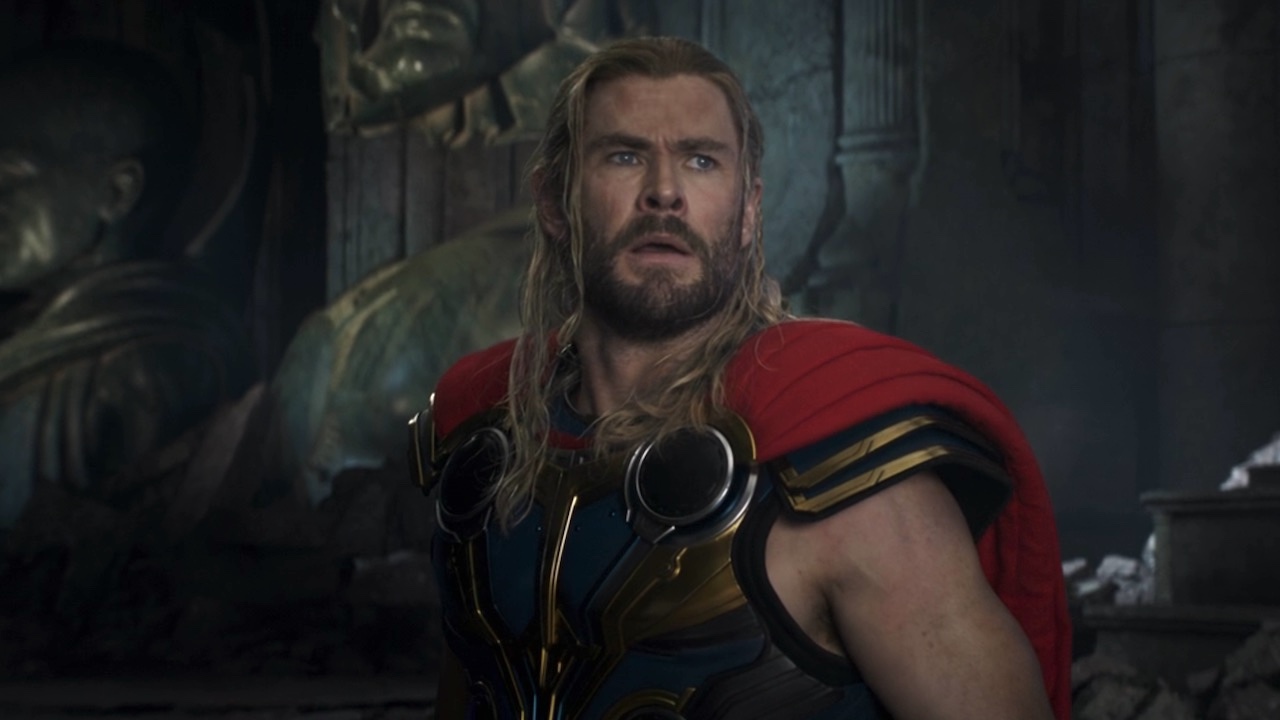Imagine a campfire ghost story told by Jack London after downing a bottle of Jack Daniels. The Man Vs. Wild atmosphere would be in full force but the plotting might be a bit punch drunk. That’s kind of what makes Wind Chill really good and really bad at the same time. It has all of the right elements for a suspenseful, mimimalist horror film from the icy locations and haunting score to the flawless lead performances and well timed scares. All that’s missing is a simple and coherent enough story to hold it all together and give us that frisson of recognition that makes a great ghost story unforgettable. Wind Chill misses the mark here since the living learn nothing from the dead except that it’s a helluva lot better to be alive. The basic set up is very simple but duplicitous. Emily Blunt (The Devil Wears Prada) plays a slightly spoiled and cynical college student who carpools with the nervous Norman Bates-like Ashton Holmes (A History of Violence) to get to her hometown of Delaware for the Christmas holidays. Blunt and Holmes are excellent in their interesting and slowly revealing roles giving their characters shadings that appear to go beyond the already well-crafted screenplay by Joseph Gangemi and Steven Katz. Holmes seems shifty but sad,lonely, and socially inept. On the surface, Blunt appears spoiled and cynical but it’s a cover for someone more confused and insecure. The first part of the film is designed as a psychological thriller in which Blunt slowly becomes aware and alarmed that Holmes isn’t who he claims to be and knows a bit too much about her personal life. But before she can question him on this issue, a phantom car on a dangerous backroad causes them to crash into a snowbank and into the film’s real genre, the ghost story.
This is where all the careful and intriguing characterization that’s been set up is merely thrown away. It doesn’t matter who these people are and the screenplay seems to know it as well, since neither of them is given an actual name. Nothing in their character or past is challenged by or connected to the ghost story puzzle, which is random and quite absurd when you finally get all of the pieces. It seems that screenwriters sometimes think that to write a good horror film all you have to do is punch in some interesting characters and then just kill them off. They all fail to do what Shirley Jackson did so well in her classic ghost story, “The Haunting of Hill House” which is to tie strong characterization to the story itself so that the weaknesses and desires of a character become the story.
Here we get some random murder that happened in the 1950s involving a homicidal Sheriff played by Martin Donovan and some retired Roman Catholic priests who look like extras from Dark City. There’s little logic to the haunting which would not matter had the film not tried to be logical. Plenty of great Italian and Japanese horror films scare us deeply BECAUSE they are inexplicable and cryptic. Wind Chill attempts to make its supernatural operate under certain rules and regulations that turn out to be inexplicable and cryptic anyway. I still can’t understand why a Sheriff who burned to death has the power to kill people with frostbite. All you had to do was have him die by freezing to death instead and the concept would be sensical. As it stands the all important backstory is lame and a total non-sequitur to the main narrative.
Production-wise, Wind Chill is fantastic. The characters are supposed to be cold and it’s totally convincing. Director Gregory Jacobs has worked for about a decade as Steven Soderbergh’s assistant and he demonstrates a strong sense of cinematic craft and a committment to telling a story without recourse to bombastic effects or camerawork. This is a very low key, moody film that must’ve been a challenge to shoot. Working from what is basically a two character play set inside the front seat of a car, both Jacobs and cinematographer Dan Lausten work miracles to keep it visually interesting. It almost works but they are done in by a script that becomes routine, repetitive and then abrubtly ends. I read about this film while it was in production and thought I might catch it when it was released, but thanks to Sony’s attempt to dump the picture, I didn’t even know it was released in April to a total of 40 theaters and a gross of less than $35,000. Spidey 3 needed more space so Sony pulled the film and just now dumped it onto DVD where it can be said to be premiering.
The DVD is an honorable effort and not the usual barebones studio hatchet job. It contains both widescreen and fullscreen versions of the film which I find amazing in this day and age. I only watched the widescreen so I cannot comment on how effectively the film was panned and scanned.
There are actually two nice extras included as well. The featurette, “A Frozen Set: The Making of Wind Chill” is more interesting than the standard studio press kit since it uses its 18-minute length to examine the very complex production issue of matching shots done on a very remote and intensely cold location with those down in a large freezer on a soundstage. Instead of the standard self-congragulatory stuff, it’s a nice little documentary on how a professional crew solves a complex production problem.
The second extra is the filmmaker’s commentary which features director Gregory Jacobs as well as screenwriters Steven Katz and Joseph Gangemi discussing the genesis of the project as an attempt to write the “smallest haunted house story” ever as well as the advantages and disadvantages of making a film with such a small cast. Some of their discussions raise issues which I think were detrimental to the project from the start, particularly in using the first act to pull a Psycho twist by shifting from a psychological character drama to a ghost story. It’s a decent commentary that proves once again how difficult it is to make a good film, even with such intelligent and experienced craftsmen involved.
Your Daily Blend of Entertainment News

